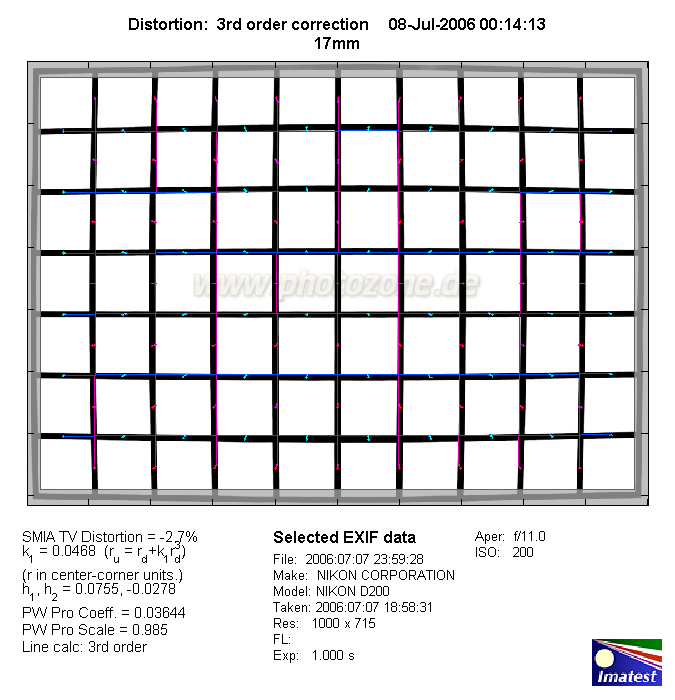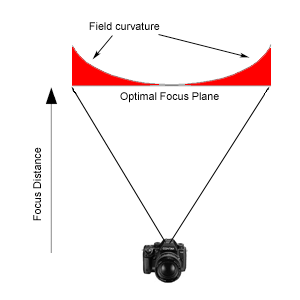|
Tamron AF 17-50mm f/2.8 SP XR Di II LD Aspherical [IF] (Nikon) - Review / Test Report - Analysis |
|
Lens Reviews -
Nikon / Nikkor (APS-C)
|
|
Page 2 of 3
Distortion
The AF 17-50mm f/2.8 SP XR exhibited average distortion figures for a lens in
this class. As expected there is pronounced barrel distortion (2.7%)
at 17mm which evens out around the 24mm setting. Beyond the images show a moderate
degree of pincushion distortion (0.9% @ 50mm).
|
Move the mouse cursor over the focal length text marks below to observe the respective distortion
|
| 17mm |
24mm |
35mm |
50mm |
|

|
The chart above has a real-world size of about 120x80cm.
Vignetting
The AF 17-50mm f/2.8 SP XR is a reduced image circle lens and these lenses tend to
produce higher vignetting figures. At f/2.8 the lens shows pronounced
vignetting of 1.4EV at 17mm, 1.27EV at 50mm and a slightly less in between.
Stopping down helps to reduce the problem.

MTF (resolution)
Many dedicated APS-C lenses suffer from performance problems towards the corners
of the image field but, surprisingly, the Tamron AF 17-50mm f/2.8 SP XR is one of the
few lenses that which are capable to break this trend.
At 17mm and 24mm the lens was even able to reach some of the highest measured LW/PH
values ever tested in the center of the image (@ f/4-5.6). Even wide open
the quality is already very good. At 24mm the quality remains basically on the
same high level. At 35mm and 50mm there's a really marginal decrease in center
performance whereas the border quality remains exceptionally high (for such a lens).
The lens showed a moderate degree of field curvature.

Please note that the MTF results are not directly comparable across the different systems!
Below is a simplified summary of the formal findings. The chart shows line widths per picture height (LW/PH) which can be taken as a measure for sharpness.
If you want to know more about the MTF50 figures you may check out the corresponding Imatest Explanations
Chromatic Aberrations (CAs)
Chromatic aberrations (color shadows at harsh contrast transitions) are high towards
the wide-end of the zoom range especially at large aperture settings with a peak of 2px
on the average at the image borders. Stopping down reduces the issue
but you will need to stop down to f/8 in order to suppress the problem to uncritical
level at 17mm. CAs are a far lesser problem towards the long end of the zoom range.
Please note that CAs can be quite easily corrected in most modern RAW converters or via tool support.

|